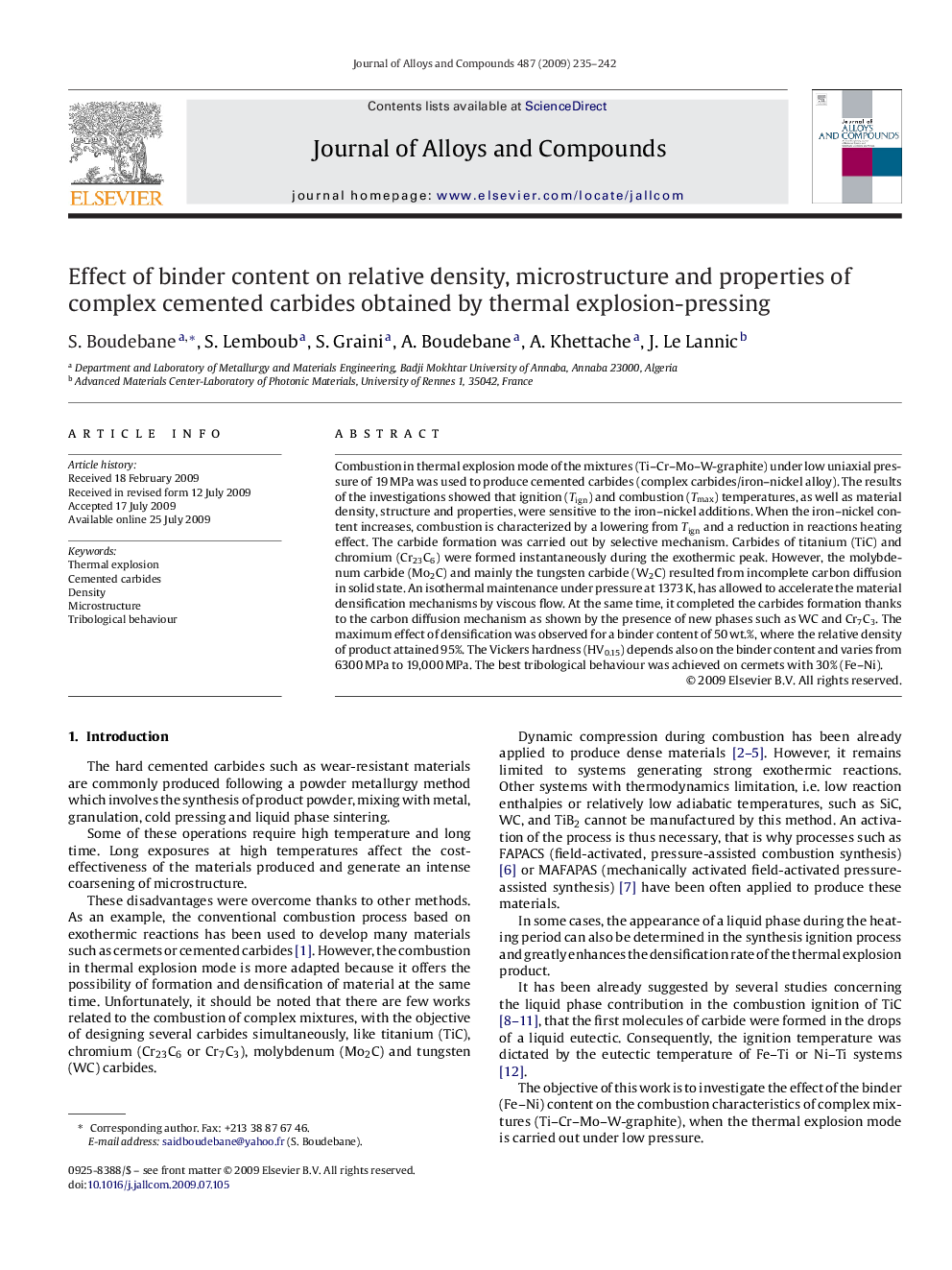| Article ID | Journal | Published Year | Pages | File Type |
|---|---|---|---|---|
| 1621758 | Journal of Alloys and Compounds | 2009 | 8 Pages |
Combustion in thermal explosion mode of the mixtures (Ti–Cr–Mo–W-graphite) under low uniaxial pressure of 19 MPa was used to produce cemented carbides (complex carbides/iron–nickel alloy). The results of the investigations showed that ignition (Tign) and combustion (Tmax) temperatures, as well as material density, structure and properties, were sensitive to the iron–nickel additions. When the iron–nickel content increases, combustion is characterized by a lowering from Tign and a reduction in reactions heating effect. The carbide formation was carried out by selective mechanism. Carbides of titanium (TiC) and chromium (Cr23C6) were formed instantaneously during the exothermic peak. However, the molybdenum carbide (Mo2C) and mainly the tungsten carbide (W2C) resulted from incomplete carbon diffusion in solid state. An isothermal maintenance under pressure at 1373 K, has allowed to accelerate the material densification mechanisms by viscous flow. At the same time, it completed the carbides formation thanks to the carbon diffusion mechanism as shown by the presence of new phases such as WC and Cr7C3. The maximum effect of densification was observed for a binder content of 50 wt.%, where the relative density of product attained 95%. The Vickers hardness (HV0.15) depends also on the binder content and varies from 6300 MPa to 19,000 MPa. The best tribological behaviour was achieved on cermets with 30% (Fe–Ni).
